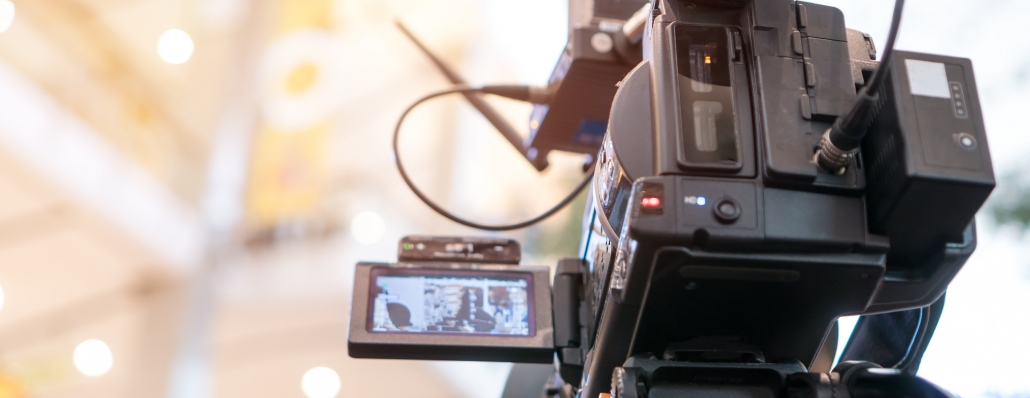Key Benefits of Utilizing Videography in Legal Situations
The combination of videography in lawful situations provides a range of calculated benefits that can considerably influence trial results. As the legal landscape proceeds to evolve, the ramifications of leveraging videography in trial settings value better assessment, especially in understanding how these advantages convert into substantial outcomes in the court room.
Boosted Proof Presentation
Enhanced evidence presentation via videography has transformed the method lawful instances are argued and recognized in the court. By integrating premium video recordings into lawful procedures, lawyers can communicate complex details in a much more engaging and understandable fashion - Legal Videography. Videography permits the visualization of proof, making it easier for juries and judges to realize the context and significance of the here and now realities
In addition to boosting clarity, videography can additionally capture real-time events, offering an authentic representation of cases important to a case. This immediacy can significantly affect the persuasiveness of an argument, as aesthetic proof commonly resonates a lot more strongly than created paperwork. Moreover, video proof can include critical components such as body movement, intonation, and environmental factors, every one of which contribute to a more holistic understanding of the situation.
Making use of videography likewise allows for reliable organization of evidence, allowing attorneys to provide their debates in a sensible and meaningful fashion. By purposefully including video clip right into their presentations, lawful professionals can assist in a much more efficient analysis of the proof, eventually causing notified decision-making by the court. The transformative power of videography in lawful contexts is both indisputable and crucial.
Improved Witness Reputation

Video evidence can additionally mitigate prospective predispositions that might occur from the witness's appearance or mannerisms in a live setup. By providing a well-produced video clip, lawful teams can make sure that the emphasis continues to be on the web content of the testimony rather than additional factors that may undermine reliability. Additionally, the chance to examine documented declarations can strengthen witness consistency, as inconsistencies can be dealt with before test, bring about even more trustworthy testaments.
Additionally, the permanence of videography provides a guard versus memory degeneration or false impression with time. By having a clear, verifiable account of witness statements, legal practitioners can build a more powerful instance, enhancing the total reliability of the witness and, consequently, the honesty of the judicial procedure.
Engaging Jury Experience
Videography can substantially raise the jury's engagement throughout legal proceedings. By including high-quality video presentations, lawful teams can capture and keep the attention of jurors, transforming complicated information right into visually compelling stories. This engagement is crucial, as jurors commonly have a hard time to absorb thick legal terms and elaborate information provided only via standard visit this site means.
Video clip proof enables jurors to witness events as they unravelled, offering context that written testaments may do not have. Making use of dynamic visuals can stimulate psychological actions, making the case much more relatable and memorable. Surveillance video or reenactments can highlight key minutes, making it possible for jurors to visualize the evidence in an engaging manner.
In addition, videography can help with an extra interactive experience. Jurors can see and listen to witnesses, which includes a layer of authenticity and immediacy that composed records can not replicate. This multi-sensory approach cultivates much deeper comprehension and retention of the here and now product.

Reliable Case Narration
An engaging narrative is vital for effective situation narration in the court. Videography acts as an effective device to offer this story and craft, engaging the jury and improving their understanding of the instance. By visually illustrating the events leading to the legal disagreement, videography permits lawyers to show intricate situations in a clear and relatable manner. This storytelling approach can stimulate psychological feedbacks and foster empathy, developing a deeper link in between the situation and the court.
Incorporating aspects such as witness repairs, computer animations, and meetings, videography gives a multi-dimensional perspective that traditional methods can not achieve - Legal Videography. This visual representation not only aids in making clear truths yet additionally aids jurors preserve critical information. Moreover, the vibrant nature of video clip can break down barriers of comprehension, making complex details extra easily accessible.
Inevitably, reliable case narration via videography transforms the court experience, enabling lawyers to provide their arguments in a compelling and influential way. By utilizing the power of visuals, lawful professionals can significantly boost their capacity to interact essential stories and attain positive outcomes for their clients.
Conservation of Testaments
Preserving testaments is a crucial aspect of lawful procedures, as the accuracy and honesty of witness statements can significantly influence the outcome of a situation. Videography functions as a reliable tool hereof, making sure that testaments are recorded in their initial context, therefore lessening the threat of false impression or distortion gradually.
By capturing non-verbal and spoken hints, videography provides a detailed account of witness statements, which can be very useful during test proceedings. This technique not only records the web content of the statement but additionally preserves the temperament and psychological responses of witnesses, providing courts a richer understanding of the testimony's credibility and relevance.
Furthermore, using videography helps with an extra reliable evaluation of testimonies during pre-trial prep work or post-trial analyses. Lawyers can review videotaped statements to make clear information, Home Page analyze incongruities, or develop approaches for interrogation.
Fundamentally, videography enhances the conservation of testaments, fostering a clear lawful process that can bring about more equitable results. By guarding the honesty of witness declarations, lawful specialists can much better advocate for their clients and support the principles of justice.

Conclusion
Finally, the integration of videography in lawful instances considerably improves the presentation of proof, boosts witness credibility, and mesmerizes courts via engaging visual material. This tool facilitates efficient narration, permitting lawyers to communicate stories that reverberate deeply with decision-makers. In addition, videography functions as a long-term record of statements, minimizing the threat of memory degeneration. Collectively, these advantages underscore the crucial role of videography in contemporary lawful techniques, inevitably adding to even more educated judicial results.
The integration of videography in legal cases offers a variety of calculated advantages that can substantially affect trial end results.Enhanced evidence discussion via videography has actually reinvented the way lawful cases are suggested and comprehended in the court room.Videography can substantially elevate the jury's interaction during lawful process. By visually portraying the events informative post leading to the lawful disagreement, videography allows lawyers to show complex circumstances in a clear and relatable manner.In verdict, the combination of videography in legal instances substantially enhances the discussion of evidence, reinforces witness reliability, and astounds juries via engaging aesthetic web content.